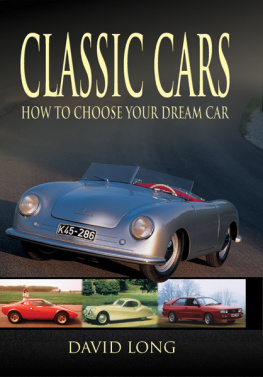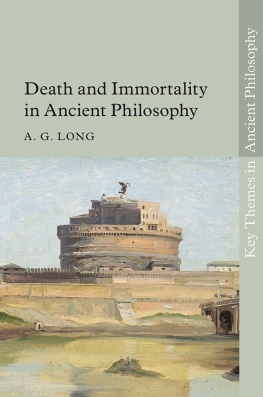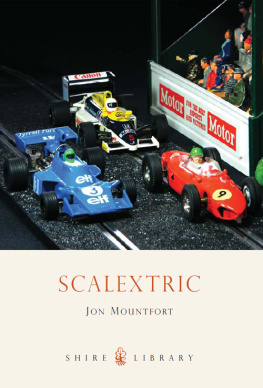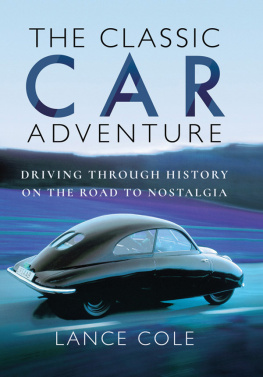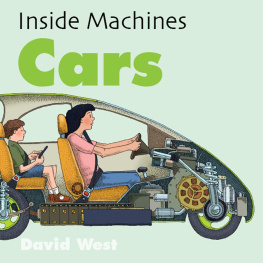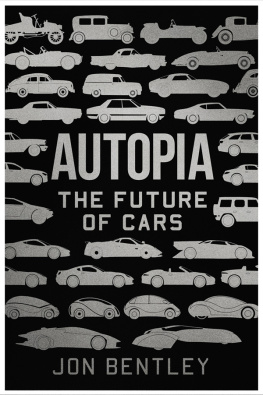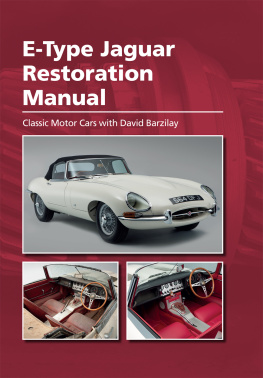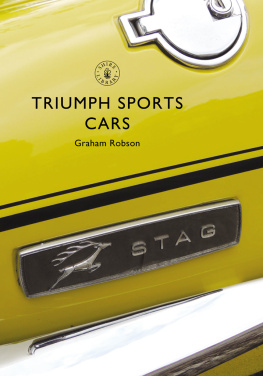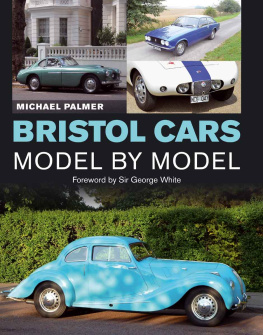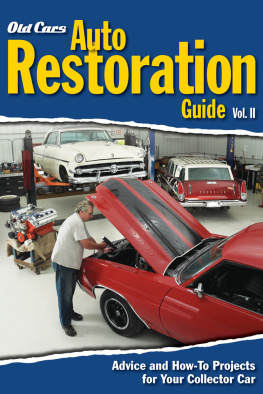
To Dr Alex Moulton CBE
Sui generis, mobile perpetuum
The author would like to thank the following for their help with images:
Aston Workshop, Durham, p8; Bob Bull, BB Associates, p31, 121, 123; British Car
Auctions (www.british-car-auctions.co.uk), p9, 10, 13, 15, 17, 20, 24, 25, 26, 29, 30, 33, 54,
107, 122, 134 (bottom image); Fiona Shoop, photographed at the Auto Collections,
Imperial Palace, Las Vegas, p18, 169; Toyota, 172; Shutterstock, p23; All other images
courtesy of the Giles Chapman Library
First published in Great Britain in 2009 by
REMEMBER WHEN
An imprint of
Pen & Sword Books Ltd
47 Church Street
Barnsley
South Yorkshire
S70 2AS
Copyright David Long 2009
ISBN 978 1 84468 052 8
Print ISBN: 978-1-84468-052-8
ePub ISBN: 9781844689101
The right of David Long to be identified as Author of this work has been asserted by him
in accordance with the Copyright, Designs and Patents Act 1988.
A CIP catalogue record for this book is available from the British Library
All rights reserved. No part of this book may be reproduced or transmitted in any form or
by any means, electronic or mechanical including photocopying, recording or by any
information storage and retrieval system, without permission from the Publisher in
writing.
Typeset by Phoenix Typesetting, Auldgirth, Dumfriesshire
Printed and bound in Thailand by Kyodo Nation Printing Services Co., Ltd.
Pen & Sword Books Ltd incorporates the Imprints of Pen & Sword Aviation, Pen & Sword
Maritime, Pen & Sword Military, Wharncliffe Local History, Pen & Sword Select, Pen &
Sword Military Classics, Leo Cooper, Remember When, Seaforth Publishing and Frontline
Publishing
For a complete list of Pen & Sword titles please contact
PEN & SWORD BOOKS LIMITED
47 Church Street, Barnsley, South Yorkshire, S70 2AS, England
E-mail:
Website: www.pen-and-sword.co.uk
Section One
What Constitutes A Classic?
You know you want one. After months or perhaps years of consideration and mulling over too many options, you finally know which one it is that you want to buy. Or maybe youre one of those lucky sorts who dont have to think about it at all because youre finally fulfilling a long-held or even childhood dream - but have you stopped to consider precisely what it is that constitutes a classic car these days?
Its an easy enough question to ask, and an obvious one. But as a quick flick through the pages of any of the established old-car mags will demonstrate, it is far from easy to define exactly what counts as a classic beyond the somewhat lame assertion that, like beauty, classic status is very much in the eye of the cars beholder.
How else to explain the regular features in the more popular magazines extolling the alleged virtues of any number of rather conventional old Vauxhalls and family Fords? Ditto the highly detailed buyers guides to workaday Renaults, Fiats, even those unlovely old Leyland landcrabs. And then, of course, there are the pages and pages full of classified ads for cars which, only a few years ago, were parked on a secondhand car lot, for a fraction of the price that is being asked for them now.

That said, of course, there are and have long been certain categories of car which qualify as classics and do so effortlessly and automatically. Sometimes this is just a function of the magic of the brand, so that even the worst Ferrari, Bugatti or Rolls-Royce pretty soon comes to be regarded as something special - and you can be sure that as a group this particular trio has been responsible for some surprisingly duff designs. At other times the brand will be a function almost of romance, so that names such as Isotta Fraschini, Frazer Nash and Hispano-Suiza exude an irresistible and exotic aura long before one has even seen an actual car, and still less driven one. And of course age has a lot to do with it too - which is perhaps only right and proper, although this means that even the absolute dross will qualify eventually if sufficient examples manage not to rust into the floor.
Here at least, speaking of age, the designations veteran and vintage are in automotive terms at least entirely clear-cut and well understood - although this doesnt stop plenty of people confusing them, or assuming that vintage is simply an easy way of describing any grand old bus regardless of when she was actually built.
Veteran, for example, actually describes any car built before New Years Eve 1904, a definite if somewhat arbitary date which was selected as the agreed cut-off point for eligibility in the first RAC-organised Veteran Car Run or London to Brighton. That said, some authorities even now argue that the end of 1905 might have made more sense, although modern owners would almost certainly riot if anyone attempted to change this particular definition this late in the day. Vintage similarly refers to any machine built between New Years Day 1919 and New Years Eve 1930, with those falling in between these two well-defined categories being often described as Edwardian, which is convenient even though, strictly speaking, Georgian would be more accurate.
Thereafter, grander marques built after the 1930s but before World War Two are bracketed under the PVT label, meaning post-vintage thoroughbreds, although here again one might have problems defining exactly what constitutes a thoroughbred. But at least most enthusiasts agree that anything this old should be considered a classic, even, frankly, the bad ones, and to be honest its hard to argue with this; if only because their mere survival thus far probably makes them deserving of continued preservation.
Why Classic Doesnt Just Mean Old
Motor forward a few years to the post-war marques and models, however, and - much as it does in the flog it world of household antiques on daytime television - the situation becomes rather more confused.

Keen to avoid including the automotive equivalent of bric-a-brac, many purists and the majority of the grander, more established old-car dealers insist that to be a true classic, a car must be not just old but special too. They mean it should be a fine or authentically distinctive machine, one which, in its day, was already recognised as something distinguished or out of the ordinary.
Most obviously this might mean one which is a worthy inheritor of a splendid competition heritage, perhaps - such as that characterised by older Lancia, Aston Martin and Maserati models - or a vehicle-type which technically moved the needle (as they say) by introducing, for example, four wheel drive: dramatically improved aerodynamics or turbocharging, to the performance car market. Alternatively the car in question might, in its day, have heralded a genuinely innovative new design language, one which effectively recalibrated the benchmarks for a particular class of car.

Almost by definition then, a classic car of this sort will have been built in quite small numbers, and have had a painfully high price tag when new. But hang on a minute. Herr Hitlers dream car, the Volkswagen or peoples car, was always cheap and never rare - far from it: for decades it was a global best-seller - yet no one these days seriously denies the classic status of something like a late-1950s split-screen convertible. Similarly, and even closer to home, the original, classless little Mini was an authentic mould-breaker - and never mind that you can still pick one up for a few hundred pounds - whilst on the Continent several similarly iconic designs, such as Dante Giacosas brilliant Fiat 500 and the peasant-friendly little Renault Four, were responsible for introducing a host of technical and design innovations quite at odds with their budget-priced, economy-car status and mass market appeal.
Next page
